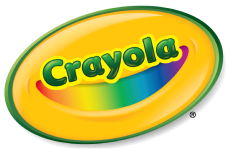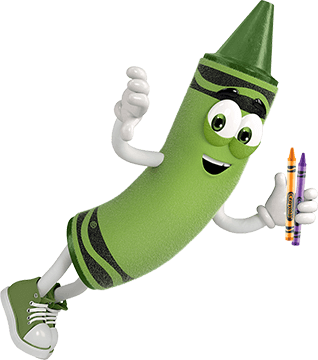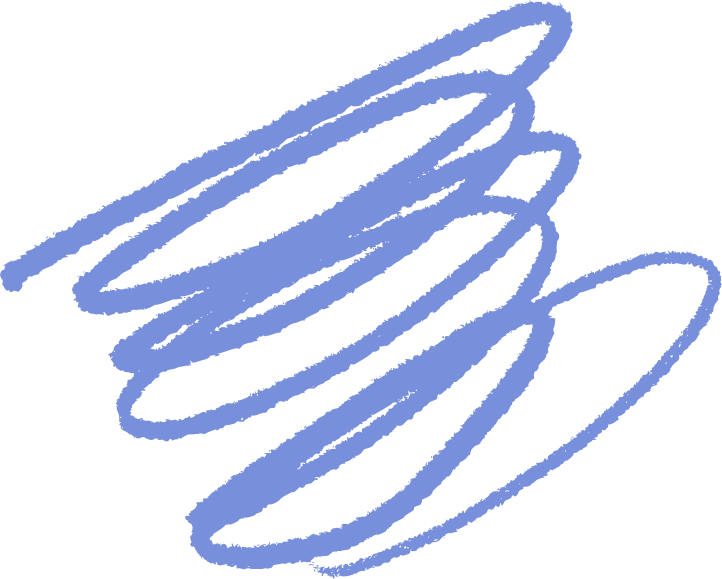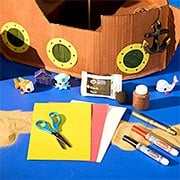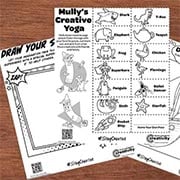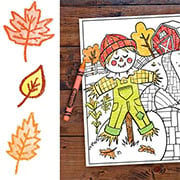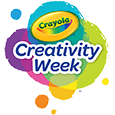Results May Vary, Test First!
We are happy to offer stain removal suggestions as a service to consumers. While our methods were tested successfully, we can't guarantee results.
Still Need Help?
CONTACT USRelated Tips
Explore answers to common questions, helpful stain removal tips, and creative ideas for making the most of our art supplies and free resources!
-
Cleaning Materials
Ammonia
Bleach for Colored Clothing Clorox 2 or Oxiclean Powder
Chlorine Bleach
Container 1 Quart or Larger
Laundry Detergent
Liquid Dish Soap
Paper Towels
Rubbing Alcohol
White Vinegar
1. Brush, scrape and rinse as much of the paint from the surface as possible. 2. Soak in a solution of 1 quart water, ½ teaspoon liquid dish soap and 1 tablespoon vinegar for 30 minutes. Agitate occasionally. 3. Rinse with water. Allow to dry. 4. Apply alcohol to stain and cover with a pad of absorbent material dampened with alcohol. Let stand as long as any stain is being removed. Change the pad as it picks up stain. Press pad firmly onto the stain each time you check it. Keep stain and pad moist with alcohol. 5. Flush with alcohol and allow to dry. 6. Soak in a solution of 1 quart warm water, ½ teaspoon liquid dish soap and 1 tablespoon ammonia for 30 minutes. 7. Rinse with water. 8. If any stain remains, use chlorine bleach as directed in step 9. 9. Chlorine bleach should not be used on certain fabrics. Test an inconspicuous area of fabric to be sure it will not be discolored. Use a solution of 1 teaspoon bleach to 1 tablespoon of water. Apply with a dropper. Do not allow this solution to remain on the fabric more than 2 minutes. When the stain is removed, or after 2 minutes, flush with water onto clean absorbent material. Apply 1 teaspoon of vinegar and again flush with water. Be sure that all bleach is removed. 10. Wash in hot water with laundry detergent and OxiClean powder or Clorox 2 and rinse in warm water. -
Cleaning Materials
Chlorine Bleach
Glycerine
Liquid Dish Soap
Paper Towels
Prepare a Wet Spotter by Mixing 1 Part Glycerine
Rubbing Alcohol
Sponge
1. Sponge stained area with water.2. Apply wet spotter solution and a few drops of vinegar. Let stand 30 minutes or more. Blot every 5 minutes with clean absorbent material. Add wet spotter and vinegar as needed to keep stain moist.3. Flush with water. Allow to dry.4. Apply alcohol to stain and cover with a pad of absorbent material dampened with alcohol. Let stand as long as any stain is being removed. Change pad as it picks up stain. Press pad firmly onto the stain each time and check.5. Flush with alcohol. Allow to dry.6. Sponge with water.7. Apply wet spotter and a few drops of ammonia. Let stand at least 30 minutes. Blot with clean absorbent material every 5 minutes. Add wet spotter and ammonia as needed to keep stain moist.8. Flush with water. Allow to dry.9. If any stain remains, use chlorine bleach as directed in Step 10.10. Chlorine bleach should not be used on certain fabrics. Test an inconspicuous area of fabric to be sure it will not be discolored. Use a solution of 1 teaspoon bleach to 1 tablespoon water. Apply with a dropper. Do not allow this solution to remain on the fabric more than 2 minutes. When the stain is removed, or after 2 minutes, flush with water onto clean absorbent material. Apply 1 teaspoon vinegar and again flush with water. Be sure that all bleach is removed. -
Cleaning Materials
Capture Spot and Stain Remover
Rubbing Alcohol
Sponge
Upholstery/Rug Shampoo
Dampen a sponge with alcohol and use a blotting motion to absorb the washable watercolor stain, changing the sponge as often as needed. Apply upholstery/rug shampoo according to the directions on the container. If stain remains, use Capture spot and soil remover according to the directions on the container. -
Cleaning Materials
Capture Spot and Stain Remover
Rubbing Alcohol
Sponge
Upholstery/Rug Shampoo
Dampen a sponge with alcohol and use a blotting motion to absorb the washable watercolor stain, changing the sponge as often as needed. Apply upholstery/rug shampoo according to the directions on the container. If stain remains, use Capture spot and soil remover according to the directions on the container. -
Cleaning Materials
Dull Knife or Metal Spoon
Liquid Dish Soap
Laundry Detergent
Clean-up stains as soon as possible, as wet paint that has not yet cured will be easier to remove.
Wet Paint
1. Using a dull knife or metal spoon, scrape up any excess paint.
2. Prepare a large container with warm water and dish soap. Wash the garment by hand to remove as much of the colorant as possible.
3. For launderable fabrics, run it through a standard wash cycle with laundry detergent on the hottest temperature the material can withstand. Do not include unstained garments in the wash cycle.
4. Repeat as needed and avoid heat-drying until satisfactory results are achieved. Air-dry instead, as heat can set the stain.
Dry Paint
1. Saturate the paint with a solution of warm water and dish soap.
2. Using a dull knife or metal spoon, scrape up any excess paint.
3. Using a soft bristle brush, scrub the area in a circular motion to help release the paint from the surface.
4. Wipe with a cloth to pick up the loose pieces of dried paint.
5. Repeat until no more colorant can be removed.
6. For launderable fabrics, run it through a standard wash cycle with laundry detergent on the hottest temperature the material can withstand. Do not include unstained garments in the wash cycle.
7. Repeat as needed and avoid heat-drying until satisfactory results are achieved. Heat can set the stain.
